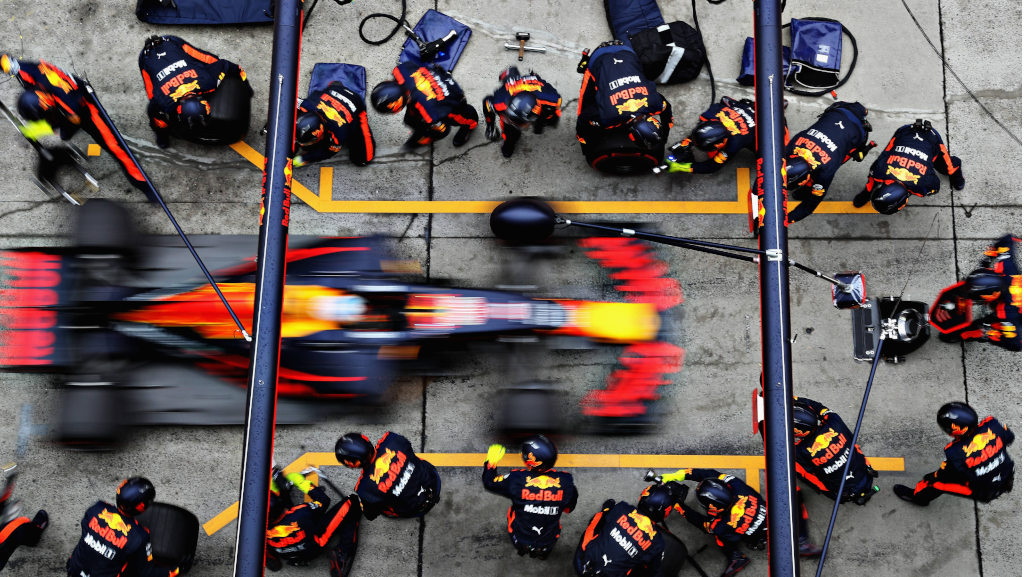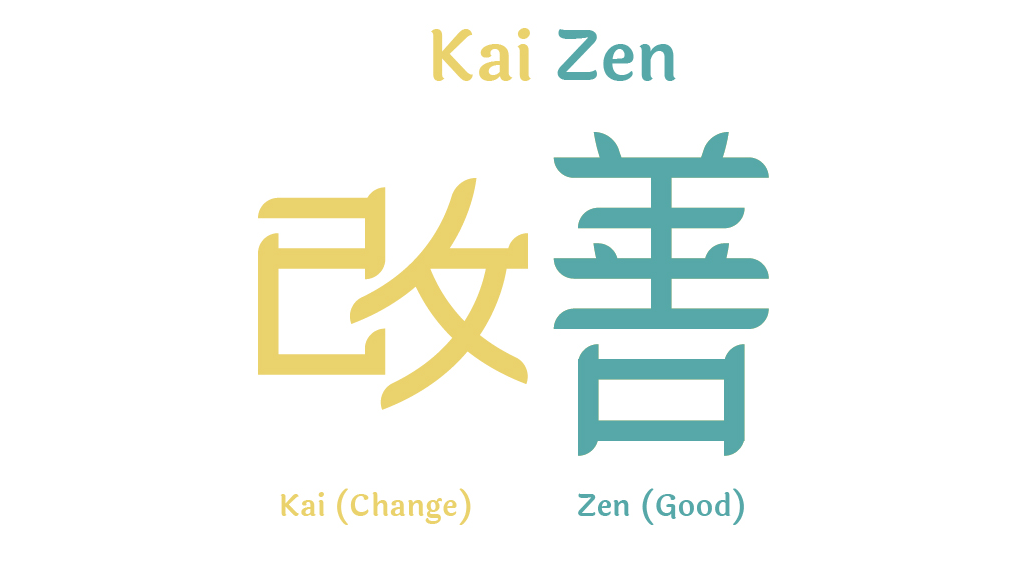
Wasted time.
How much time do you spend sitting in traffic? Attending unnecessary meetings? Searching for lost documents? Or using outdated, slow, and difficult systems?
There is nothing worse or more harmful than wasted time. Companies lose 20-30% of revenue each year due to inefficiencies like these.
“More than a third of a worker’s day is typically wasted on outdated processes and unnecessary tasks.”
FinancialDirector, How Inefficient Processes Waste Nearly a Third of Employees’ Time
But then you look at companies like Toyota.
Toyota makes 10 million vehicles every year. When we consider that one car comes off the production line every 3.1 seconds, one thing Toyota doesn’t do is waste time.
How do they do it?! What’s their secret?
All will be revealed as we make our way through this FAT FINGER post on workflow analysis and discover:
- What workflow analysis is & how it stops wasted time
- How workflow analysis can help you and your business
- How & when to conduct workflow analysis
Trust me – this will not be a waste of time!
What workflow analysis is & how it stops wasted time

Workflow analysis is as simple as it sounds: It’s the process of analyzing a workflow, or the set of steps you take to complete a task.
Every organization has workflows. From the steps you take to run a safety inspection to the procedure you follow to complete a monthly site audit.
When you analyze your workflows you break down each step within the process and objectively assess it. This allows you to spot unnecessary tasks, inefficiencies, and bottlenecks that are slowing you down and costing you money.
“The best companies are able to examine their processes and understand where losses of time and energy are occurring and cut down on those as much as possible.”
Forbes, Best Company Traits: Efficiency
However well you think a process is working, there will always be a way to improve it.
How else do you think Toyota got so quick at manufacturing cars?
And, sticking with the car theme, how else do you think the best Formula 1 teams get their mid-race pitstop time down to under three seconds?
How F1 teams use workflow analysis to achieve pitstop perfection

In less than the time it takes you to tie a shoelace, a team of F1 mechanics has:
- Jacked the front of the car up
- Jacked the back of the car up
- Checked the starter motor
- Taken four tires off
- Put four tires on
- Checked and refueled the engine
Which. Is. Mind. Blowing.
But what do F1 racing teams and pitstops have to do with workflow analysis?
At the time of this post, Aston Martin Red Bull Racing is the fastest team in the world when it comes to pitstops. They hold the current pitstop speed record at 1.82 seconds (blink once and you’ve missed it), and they held the previous record (1.91 seconds – blink twice and you’ve missed it) for over a year before that.
How do they do it?!
Yep, you guessed it. By constantly analyzing and then improving their pitstop process.
After most practice-runs or races, Red Bull Racing will sit down as a team and carefully assess every single step, action, and task involved in the pitstop process. They’ll watch video footage, discuss performance, and seek guidance from experts on how they could shave microseconds off their best pitstop time.
They’ll then test these ideas and strategies out. They’ll run practice pitstop processes with different tires, other team members, alternative track positions, newer tools, and better equipment until they see an improvement. Even a fraction of a second counts.
And then they’ll start their analysis again.
As a result of consistent workflow analysis and the continual improvement that comes with it, they’ve built and maintained the most efficient pitstop process in the world.
For F1 teams like Red Bull Racing, workflow analysis has clear benefits.
But, I imagine changing a tire in under a second isn’t a prerequisite for you and your organization. So, what are the benefits of workflow analysis for you?
How workflow analysis can help you and your business
So far, I’ve established what workflow analysis is and I’ve demonstrated how it works. Let’s now look at what it can bring to your table.
Workflow analysis benefit #1: Improves efficiency & productivity

“Productivity increases from the elimination of duplicate work, simplified processes, and effective use of resources.”
How Your Business Can Benefit from Workflow Analysis, CDC Synetics
Workflow analysis forces you to look at how your business is functioning and it encourages you to take steps to make it function better.
By analyzing every aspect of every workflow, you can quickly see if there are any redundant parts in the process. You’ll be able to identify what cuts can be made, where shortcuts could be developed, where the unnecessary steps lie, and what the time-consuming activities are.
For example, let’s say you run a weekly sales report. After analyzing the sales report process you find a step that requires your employees to manually input data from several spreadsheets into your reporting software, so that the report can be generated.
You discover that this part of the process not only takes up a huge amount of time, but it’s also prone to human error.
What can you do to improve it? Could you find a way to automate this part of the process? Or, could you find newer, more comprehensive reporting software that collects the data and generates the report?
Either way, once you’ve analyzed your process and established where you can improve it, you can then take action and watch efficiency levels increase, productivity improve, and costs start to fall.
Workflow analysis benefit #2: Keeps processes aligned with business needs

Workflows drive your business forward by making sure that the right things get done by the right people, at the right time, and in the right way. Right?!
So it makes sense that when your business evolves, changes, or grows, so should your processes. Which is where workflow analysis comes in.
For example, let’s say you’ve recently changed your organizational strategy to go after bigger and better clients. After a few months, you realize that acquisition levels have fallen dramatically! When you go to analyze your prospecting process, you find that your team is still reaching out to new prospects via email.
While this worked well for smaller companies and start-ups, these bigger clients require a more strategic and personalized approach.
So, you change the process. You build customer research, personalization tactics, and relationship building into the prospecting process so your team is able to approach these bigger clients and get them onboard with greater success.
By examining your workflows in detail, you can see what’s working well and what isn’t. Once you’ve identified the areas that can be improved, improve them so your processes are in-line with your business needs.
Workflow analysis benefit #3: Encourages continuous improvement

When you analyze workflows, you’re not only looking for ways to improve efficiency and meet business needs, you’re also looking for ways to improve.
You’re looking to find the best, most efficient, and cost-effective way of working.
“After a plant reaches peak efficiency, the management reduces the number of workers slightly, so that the efficiency ratio falls. Then it introduces kaizen (continuous improvement) to return to the earlier level.”
How Toyota Uses Kaizen for Efficiency, Business Today
Let’s revisit Toyota for a second. Whether you’ve heard of the Toyota Production System (TPS) or not, you probably know that Toyota is considered, by most industries, to be the Godfather of continuous improvement (Kaizen).
Toyota brought the Kaizen concept into its manufacturing processes in the 1980s. They were the first to develop a continuous process for analyzing manufacturing workflows, highlighting issues, and identifying and implementing solutions to improve production.
Over time, little improvements to production processes led to big increases in the number of cars manufactured. This number grew and grew and grew, and continues to grow – as we can see by the 10 million cars they produce and the $278 billion net revenue they make each year.
“Kaizen, or continuous improvement, is the hallmark of the Toyota Production System. The primary objectives are to identify and eliminate “Muda,” or waste in all areas, including the production process.”
Kaizen History, Qualitiamo
How & when to conduct workflow analysis
To analyze a workflow, you first need to make sure it’s documented.
How to document your workflows

To document a workflow, you need to list out all the steps involved in the completion of an activity or task.
You could write out your workflows on bits of paper, type them up in a Google Doc, or create them using a business process management (BPM) tool like FAT FINGER.
Watch this video to understand what FAT FINGER is and what this type of BPM software can do to help you manage your processes:
The beauty of using a BPM tool like FAT FINGER to document your workflows is that it’s so quick and simple to use. All your workflows can be created and stored in one, central place, you can analyze and update each one easily, you have access to real-time data that can help you improve your workflows, and you can automate all your manual tasks.
If you’re looking for an efficient way to document and analyze your organizational workflows, look no further.
Thanks to the easy, no-code, and fuss-free process management solution that FAT FINGER offers, companies using FAT FINGER have saved up to seven hours of wasted time for each process they create and follow.
Imagine what you could do with those extra hours?
Sign up for a free trial and see for yourself.
But, however you decide to document your workflows, you need to make sure that it’s easy to do, easy to update, and easy to access.
Once you’ve got your workflows documented, you can then start to analyze them.
How to analyze your workflows in 4 simple steps

The best way to analyze your workflows is…drumroll please…to create a workflow for analyzing your workflows.
Again, this is where a BPM platform like FAT FINGER can help. Create a workflow analysis template, add the below ‘workflow analysis steps’ into the template, and run a checklist from this template each time you need to analyze one of your workflows.
That way, you’ll follow the same process each time you’re analyzing a workflow and all your information can be recorded, stored, and accessed whenever you need it, from wherever you are.
So, here are the four key steps to take when conducting workflow analysis:
Workflow analysis step #1: Establish the goal 🎯
Look at your workflow and establish why it needs to change. What are you looking to achieve when you change it: Improved efficiency? Reduced waste? Improved quality?
Having a goal in place will help you identify the improvements you need to make to the process to hit that goal.
Workflow analysis step #2: Gather information 👀
Next, you need to examine each step in the workflow and really understand the process you’re analyzing.
Have the process in front of you and ask yourself and your employees questions like:
- How long does each task take?
- How many tasks are necessary?
- How long does each task take to complete?
- Are there any missing steps?
- Are all the tasks in the right order?
- Would these steps make sense to a newcomer?
- Are there any unnecessary steps?
Asking probing questions like this will help you uncover where the issues lie, where the opportunities are, and whether the workflow is meeting its key objectives.
Top tip! Try using a SWOT template, like this one, to record where the strengths, weaknesses, opportunities, and threats are within the process you’re analyzing.
Workflow analysis step #3: Determine KPIs ✔️
You’ve established your workflow goal, you know how to improve the process, now it’s time to decide how to measure the success of your improvements.
For example, if your goal is to improve efficiency, your KPI might be to measure how long it takes to complete the workflow from start to finish. Or, if your goal is to improve quality, your KPI might be a 10% reduction in customer complaints.
Workflow analysis step #4: Take action 🏃
Now it’s time to put your workflow analysis findings into action.
Let’s revisit the weekly sales report example we covered earlier, and let’s imagine that your goal is to improve the efficiency and accuracy of this workflow.
Instead of your team manually inputting data from several spreadsheets into your sales reporting software, you’ve decided to automate the whole process using FAT FINGER. Your team now captures the sales figures within the sales reporting process you’ve created in FAT FINGER, and this data is then automatically sent into your reporting software with a click of a button.
After monitoring the new process for a few weeks, it’s clear that the newly improved workflow takes less time to complete and it produces fewer errors. It’s a success!
And that’s how to conduct a workflow analysis. It really is that simple.
But that’s not where it ends…
When to analyze your workflows – the 4 key signs

After you’ve analyzed your workflow, implemented your improvements, and hit your goal the work doesn’t stop there. You need to keep monitoring it. You need to keep analyzing it and you need to keep improving it.
Let’s not forget Red Bull Racing’s drive for pitstop perfection. The more you improve a process the more efficient it gets, and the bigger the benefits it will bring.
Having said that, there are usually four warning signs that will alert you when a workflow needs urgent attention:
- If you’re consistently seeing delays
- If your customer complaints have started to increase
- If staff and stakeholders fail to carry out a process properly
- If those using the process express concerns (and/or want to replace it with a new version)
And there you have it: How to save both time and money with workflow analysis.
Before I go, let me leave you with this quote:
“It is better to waste money than it is to waste time. You can always get more money”’
Lifehack, Top 7 Ways People Waste Time At Work And Get Away With It


